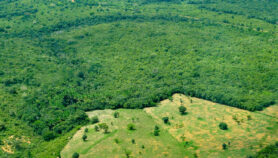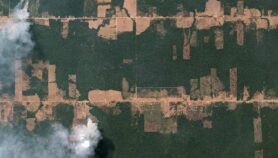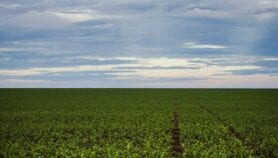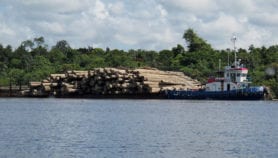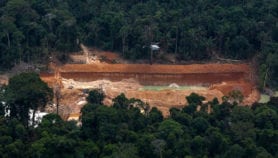By: Jan Piotrowski
Send to a friend
The details you provide on this page will not be used to send unsolicited email, and will not be sold to a 3rd party. See privacy policy.
Forests, deserts and other habitats are suffering while decision makers are busy sifting through the myriad of indicators for effective land management — and different methods for collecting this sea of data only dilute the impact that research has on policy, a meeting heard.
“When it comes to land management planning, we don’t have a system and, because of that, we don’t manage this resource well,” said Tony Simons, director-general of the World Agroforestry Centre, a research centre headquartered in Nairobi, Kenya. He spoke at the International Alliance of Research Universities’ Sustainability Science Congress in Copenhagen, Denmark, on 23 October.
“We currently have a shopping list of [hundreds of] indicators. How are we meant to know which ones are important?” he said.
Land management is likely to play a central role in the Sustainable Development Goals (SDGs), a set of goals currently under consideration by the UN, which will replace the Millennium Development Goals (MDGs) that expire next year. A ‘zero draft’ compiled earlier this year with 17 tentative SDG topics suggested that reducing land degradation, desertification and deforestation must be priorities.
There should not only be a clear system to determine which factors are important for judging the effects of human activities on the environment, but also agreed methods to collect this information, said Simons.
At the moment, the data given by various indicators is fairly good, said Simons. But the often vague definitions — particularly for sustainable land use — mean that researchers are not always measuring the same thing. For example, governments can classify a seriously degraded forest as ‘temporarily unstocked’ rather than ‘deforested’ if they have vague plans to replant it in the future, which gives an inaccurate representation of the situation, he said.
Speaking on the fringes of the meeting, Simons suggested eight indicators that could be adopted as collective priorities: soil organic carbon, water balance, water use, biodiversity, emissions, productivity, strength of farmer organisations, and government institutions and infrastructure. But it would be up to the UN or another major international aid body to get the idea off the ground, he told SciDev.Net.
There is indeed a pressing need to give policymakers “simple messages based around a few indicators”, said Karl-Heinz Erb, an ecologist at the Institute of Social Ecology in Vienna, Austria – and agreeing on the important facets of land use, which must include socioeconomic factors alongside environmental ones, would greatly improve communication of the issue.








